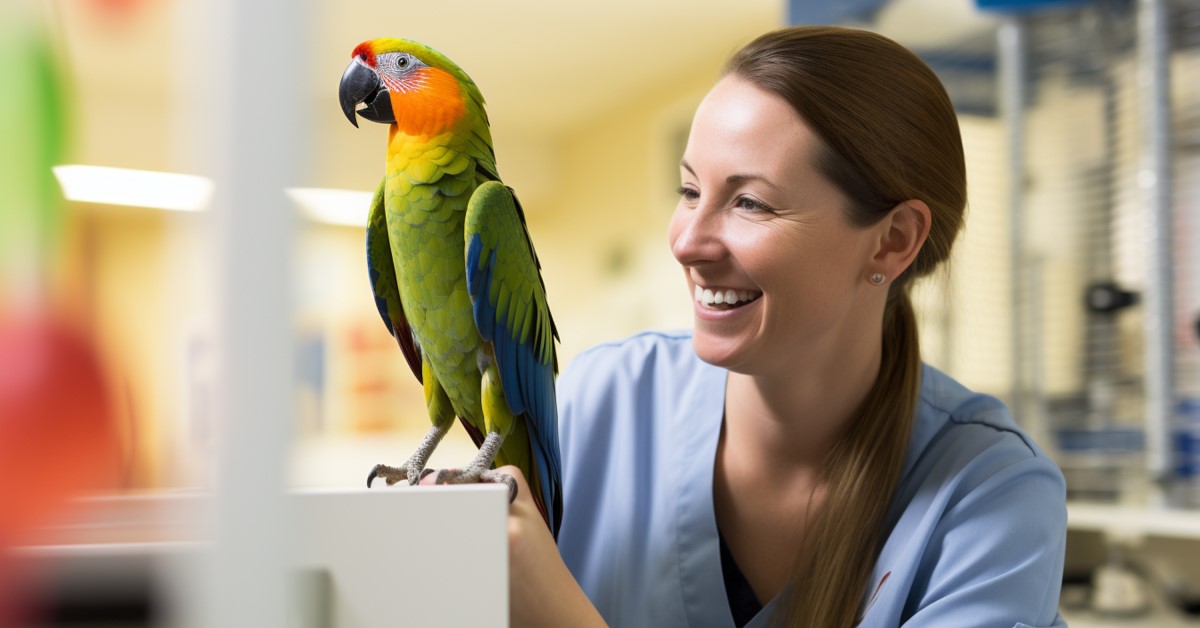How to Train Your Pet Parrot: Tips and Tricks
With the right tools and techniques, you can train your parrot to do many amazing things.

If you've just adopted a parrot, you have a pet capable of some astonishing feats. These highly intelligent birds can be trained to sit on your shoulder, perch, dance, fetch, ride a toy bicycle or skateboard, and even speak. However, you must know how to communicate with your bird in a way that makes training both possible and rewarding. Let's take a look at some helpful parrot training tips.
Parrot Training Tools
Like many other animals, parrots respond to positive reinforcement, not punishment. This usually takes the form of treats awarded whenever the parrot does what you want it to do. First, however, you need to identify what foods your parrot loves above all else through trial and error. Once you've identified them, put them aside and give them to your parrot only as a reward for a job well done.
In addition to treats, you'll need a few other tools for your parrot training endeavors. The basic tools every parrot trainer should have include some sort of perch, a noise-making device called a clicker, and a chopstick or similar stick for target training (see below). You will also need a towel at some point so you can train your parrot to feel comfortable being toweled down during vet visits.
Set the Scene for Your Parrot
Don't assume that your parrot is always ready for training sessions whenever you are. Parrots can have good days and bad days, just as humans can. If your bird is feeling cranky, withdrawn, or just generally unenthusiastic, wait for it to get into a happier, more interactive mood before conducting the training session.
While your parrot may feel most at home inside its cage, the cage environment isn't helpful for training. Parrots benefit from getting out of that closed environment and into a designated training area. They'll also appreciate the fact that you had a chance to clean their cage. For this reason, you'll want to teach your parrot how to step up out of the cage and onto an exterior perch in the same room.
Introduce the Treat-Clicker Combination
The first step in parrot training is to encourage your parrot to accept treats from your hand and to understand that their treats are a reward. When your parrot eats out of your hand, click the clicker. After several repetitions, the bird will understand that the sound of the clicker means a treat is coming -- and that if it wants more treats, it must behave in ways that produce clicks and rewards.
Train Your Parrot to Step Up
Now that your parrot understands how to get those yummy treats from you, you can begin the real training by making your parrot step up from its cage perch onto your finger or an external perch. If you're really lucky, you might make this happen simply by extending your finger and saying, "Step up." When your parrot finally gets the idea, immediately click the clicker and feed it a treat. Reinforcement of this training should result in your parrot happily perching in your hand, on your shoulder, or even on someone else's shoulder.
Once your parrot feels comfortable perching on your hand, gentle handling over repeated sessions will teach it not to fear being handled by humans. This simple step forward will make a big difference in your ability to interact with it.
Employ Target Training
Target training involves teaching your parrot to follow an object to a specific destination. Here's where the chopstick comes into play. Start by holding the chopstick out until the parrot nudges or bites it with its beak; or, touch the chopstick to its beak if it doesn't take the hint at first. Reward this contact with clicks and treats. Eventually your parrot will learn to follow the tip of the chopstick to wherever on the perch you want it to go. This progressive, staged training approach is sometimes called shaping.
Talk to Your Parrot (Until It Talks Back)
Yes, many parrots can talk, although some either can't or simply never do. If your parrot refuses to talk despite your best efforts to teach it, you may simply have a non-speaking bird. Repeat the desired words or phrases clearly and simply, making sure that the bird can watch your mouth move. Always reward successful speech with a treat.
Some parrots begin repeating after their masters with surprising speed and ease, while others may require more repetition. It helps to use a bright, cheery tone of voice, as you might use when teaching new words to a baby. Just keep in mind that parrots can also pick up words you don't want them to repeat. In other words, watch your mouth, especially when you're excited or angry!
Trouble Training Your Parrot? Your Vet Might Have the Answers
If you can't get your pet parrot to engage in training sessions at all, the bird may be suffering from a mental or physical wellness issue. For instance, an anxious or depressed parrot may have no interest in learning new things, while a parrot that doesn't respond to treats may have an illness that has robbed it of its appetite. When in doubt, bring your parrot to an experienced avian veterinarian for a checkup, and ask him or her for advice on how to help your parrot get into tip-top, trainable condition!
Ready to start saving money on pet wellness care?
Then take a look at Mint Wellness, the pet wellness plan that provides fast reimbursement on routine pet care. Save on vaccinations, wellness exams, preventatives, dental, and more!
Learn More